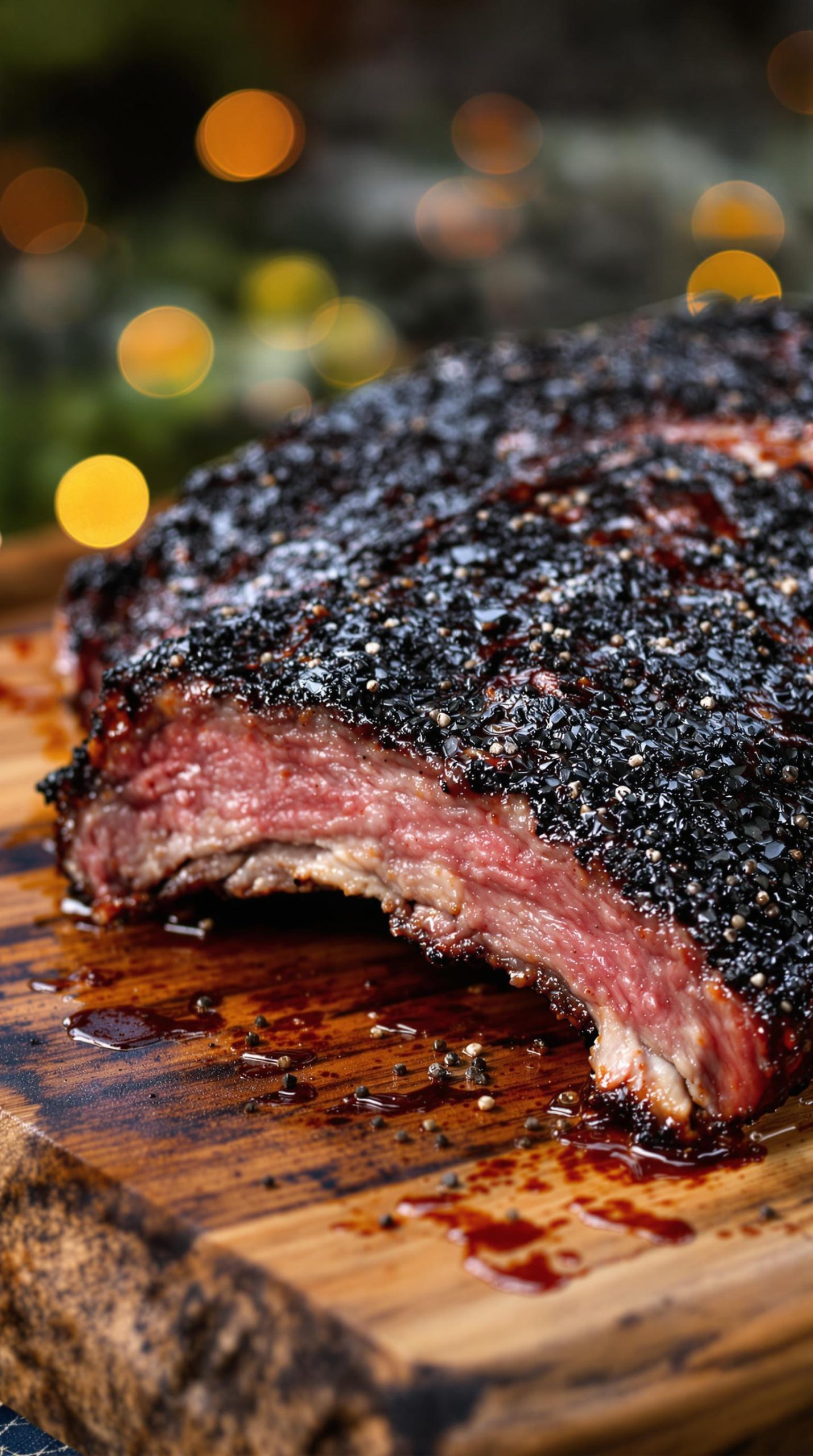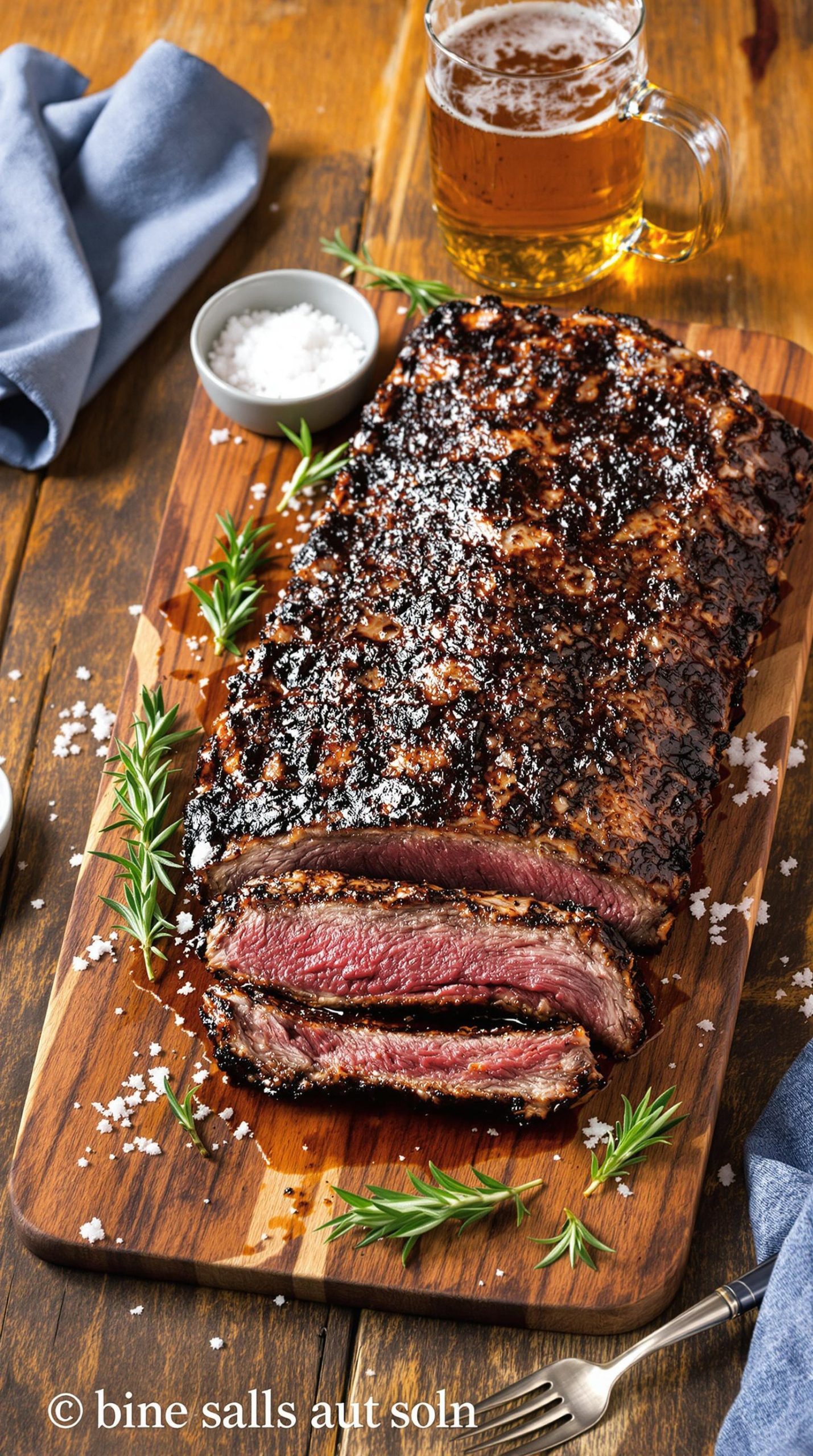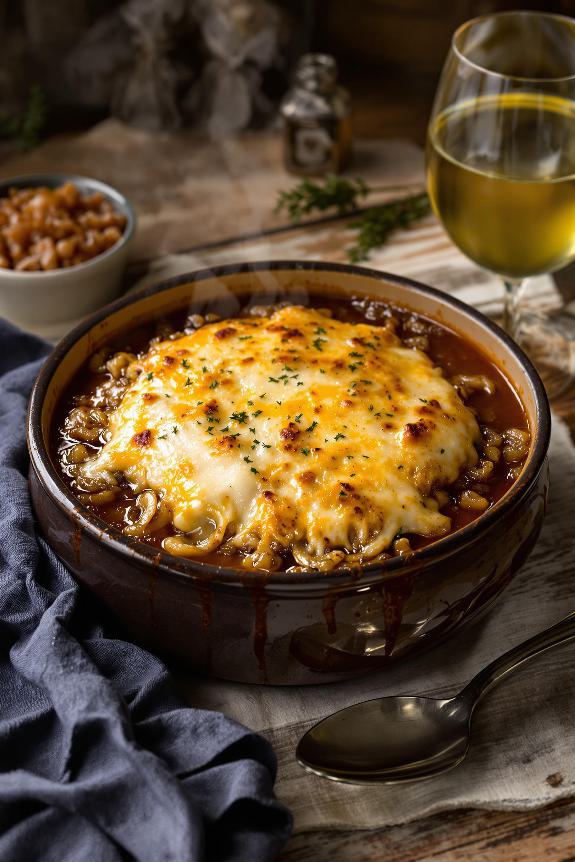Why You’ll Love these Slow-Smoked Beef Ribs
When it comes to comfort food that truly delivers, these slow-smoked beef ribs stand in a league of their own. The magic happens during that long, slow cook—transforming tough meat into tender, melt-in-your-mouth goodness that slides right off the bone.
I love how simple the ingredients are: just salt and pepper letting the beef’s natural flavor shine through. No fancy marinades needed. The smoky depth that develops over those 4-6 hours? Absolutely unmatched.
Perfect for lazy weekends when you can tend the fire and savor the incredible aroma wafting through your yard. Who needs air fresheners when you’ve got beef ribs smoking?
What Ingredients are in Slow-Smoked Beef Ribs?
When it comes to slow-smoked beef ribs, simplicity reigns supreme. This recipe embraces a minimalist approach that lets the natural flavors of quality beef shine through. Unlike many barbecue recipes that call for complex rubs or marinades, these ribs rely on just a handful of ingredients and the transformative power of low, slow heat.
The beauty lies in how these basic components work together to create something truly extraordinary.
- 1 rack beef ribs (about 1 pound)
- Coarse salt
- Fresh coarse ground black pepper
The quality of your ingredients really matters here. Look for beef ribs with good marbling—those little streaks of fat that render down during cooking and keep everything juicy and flavorful.
And don’t skimp on the pepper, either. A fresh coarse grind provides those little bursts of spice that complement the rich beef perfectly. While you could certainly experiment with additional spices like garlic powder or paprika, there’s something magical about letting the smoke and meat speak for themselves.
Sometimes, less truly is more, don’t you think?
How to Make these Slow-Smoked Beef Ribs

Making slow-smoked beef ribs might sound intimidating, but trust me, the process is surprisingly straightforward. Start by seasoning 1 rack of beef ribs (about 1 pound) with a generous sprinkling of coarse salt and fresh coarse ground black pepper. Don’t be shy here—these big, meaty ribs can handle a good coating. The salt not only enhances the natural flavor of the beef but also helps create that coveted bark on the exterior that we all secretly pick at before serving.
Now comes the part that requires patience (something I’m still working on in my everyday life). Place your seasoned ribs on the lower rack of your fire pit, positioning them closest to the fire, or on a preheated grill maintained at 300 to 350 degrees F. This temperature range is critical—hot enough to render the fat and break down the collagen, but low enough to avoid drying out the meat.
Over the next 4 to 6 hours, you’ll want to rotate the ribs three times throughout the cooking process. This rotation guarantees even cooking and helps develop that beautiful smoky crust all around. How do you know when they’re done? The meat should reach an internal temperature of 190 to 200 degrees F. At this point, the meat will be tender enough to practically slide off the bone, but still have that desirable chew that makes beef ribs so satisfying.
While the recipe instructions are minimal, there’s wisdom in what’s not written. During those 4-6 hours, resist the urge to constantly open the grill or smoker—you know what they say about a watched pot never boiling? Same goes for ribs never tenderizing when you peek every 15 minutes. Each time you open the lid, you release heat and extend the cooking time.
Instead, use that time to prepare sides, or better yet, sip something cold and enjoy the aromatic smoke signals that tell the neighborhood something amazing is happening in your backyard. For those without access to outdoor cooking space, an indoor electric grill can provide similar results with more precise temperature control and less smoke. A premium grill offers consistent heating and easy cleanup, making it perfect for apartment dwellers who still crave that barbecue experience.
Slow-Smoked Beef Ribs Substitutions and Variations
The beauty of beef ribs lies in their adaptability, even while maintaining their soul-satisfying essence.
If you can’t find beef ribs, try substituting short ribs or even pork ribs—just adjust your cooking time accordingly.
Not feeling the simple salt and pepper rub? I’m all for experimentation. Add smoked paprika, garlic powder, or brown sugar for depth.
No fire pit? A standard grill with indirect heat works beautifully, or even your oven at 275°F wrapped in foil.
The key is patience, regardless of your method. Low and slow cooking transforms any cut into melt-in-your-mouth perfection.
What to Serve with Slow-Smoked Beef Ribs
Nothing complements those gloriously smoky, tender beef ribs quite like the right supporting cast on your plate.
I’m partial to creamy mac and cheese—its velvety texture balances the rich, meaty ribs perfectly. Classic coleslaw adds that essential crunch and tang to cut through the fattiness.
Can’t forget cornbread, right? Warm, slightly sweet, ready to soak up those precious meat juices.
For something green (we need balance, folks), roasted Brussels sprouts or a simple mixed greens salad works wonders.
And drinks? An ice-cold craft beer or bold red wine, depending on your mood.
Trust me, these sides elevate good ribs to unforgettable.
Final Thoughts
After investing several hours in the smoky, patience-testing art of beef rib preparation, I’m convinced the results are worth every minute.
The transformation from tough rack to tender, flavor-packed meat creates an experience that’s hard to match in home cooking.
Remember, patience isn’t just a virtue—it’s a requirement.
The slow rendering of fat, the gentle infusion of smoke, the gradual breakdown of connective tissue.
Can you think of many dishes that reward your investment of time so generously?
These ribs aren’t just a meal, they’re a celebration, a proof of traditional cooking methods that can’t be rushed.
For those who prefer pork, baby back ribs can be prepared by first boiling them in a flavorful mixture and then applying dry rub seasoning before the smoking process begins.





